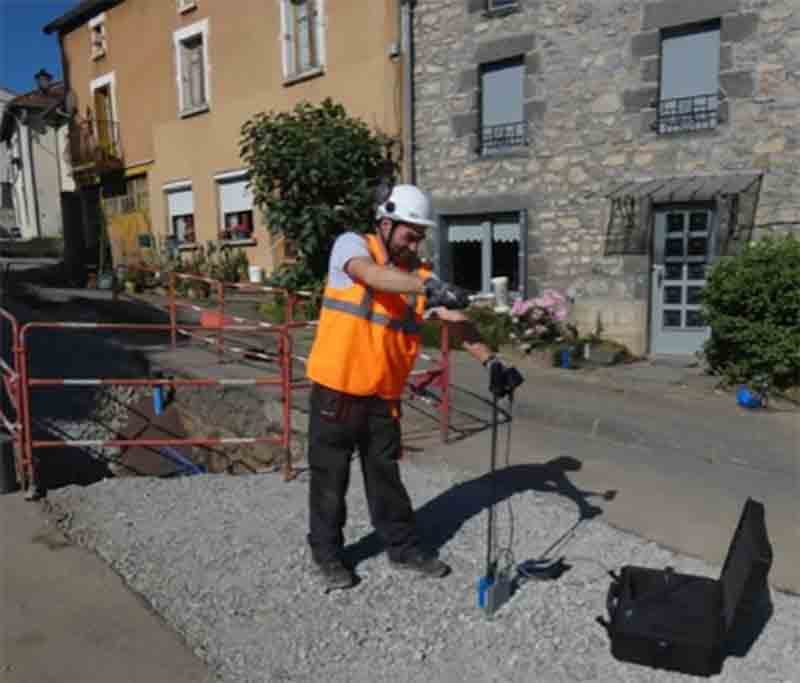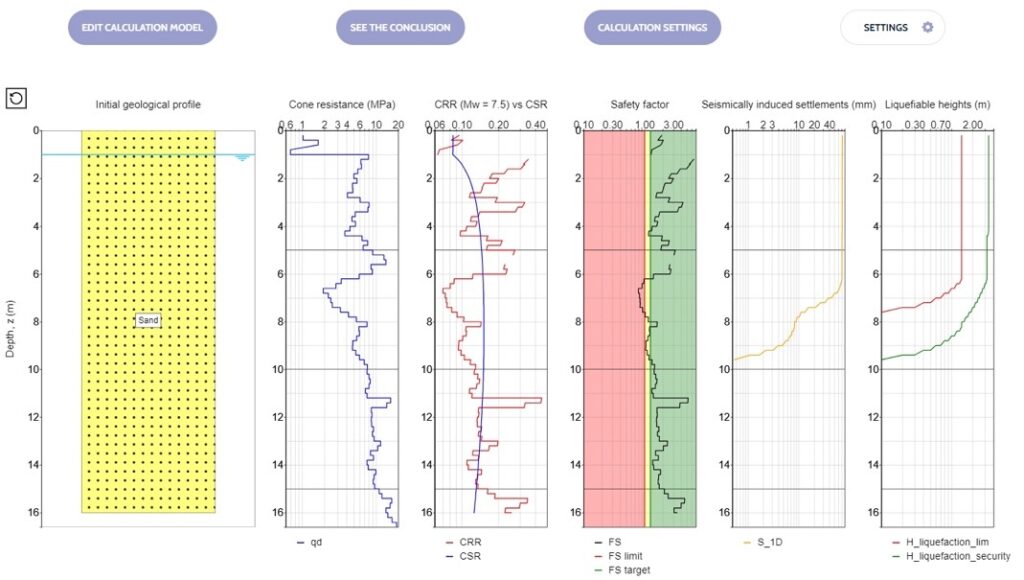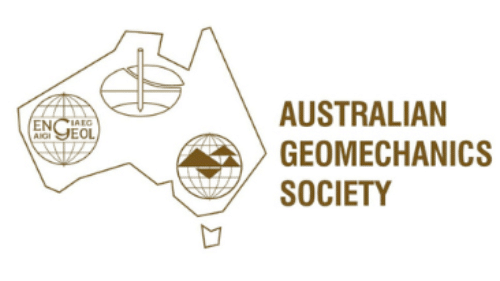How To Eliminate Service Trench Remediation, Post Construction In Trafficable Zones – Case Study
It’s a common occurrence to see service trench works completed across road pavements settle and create a traffic hazard particularly when these trenches are installed after the original road pavement is constructed. This occurs due to the limitation of proper compaction of trench backfill and or the ability to test the backfill process.
For example, in Victoria (Australia), the backfill of a service trench is generally completed in a two part process.

- Lower Layer (from 300 mm above pipe/conduit to 600 mm below the surface).
- Upper Layer (from 600 mm below surface course)
The initial backfill material placed over the pipe is lightly compacted so as not to damage the asset. The Lower Layer of material is typically compacted and the trench stays open until it is tested for compaction using a Nuclear Density Meter. The test results typically take, at minimum, 1-2 days to complete with a NATA accredited testing facility who are licenced to operate the Nuclear Density Meter (NDM) equipment. Maybe it passes or maybe it fails.
If it fails, what happens then?

Next, the wearing course, a temporary asphalt cap (cold mix), is applied and the road is opened to traffic again. Typically, a few days later, a density test to measure the level of compaction of the Upper Layer is carried out. Traffic management is required. The results come back a few days after this and again, maybe it passes or maybe it fails.
If it fails, what happens then?
If it passes, some days or weeks later, the asphalting crew come by and apply a hot mix asphalt cap to the trench. Again traffic management is required.

Roll forward a few months. Because of poor compaction, the surface has settled where the trench is, damaging vehicles and creating a potential safety hazard. Maybe the caretaker of the road becomes aware of this and then eventually a crew is tasked with its repair.
Does this strike you as an efficient process? Who picks up the cost when further repair works are required after trenching is completed?
In Europe and elsewhere, the process is very different. Pavements are typically designed using modulus, it being the most accurate and independent means for judging deformation (stiffness) and, thus, a material’s level of compaction.

In Germany, for example, prior to beginning the trenching process, the asphalt is removed and an assessment is made of the modulus of the Upper Layer. Typically, this is done using a Light Weight Deflectometer (LWD). The trenching process now begins. When it comes to backfilling, each layer is compacted and then tested using the LWD, a layer by layer compaction control tool.
To avoid unwanted settlements, compaction has to be tested and results documented for every material layer by the contractor in a mandatory self-monitoring process. Target values for modulus measurements for different subgrade layers and standard construction materials can be found in the respective German design guidelines such as the “ZTV A-StB” or the “RStO”. These guidelines furthermore recommend a minimum number of passes for different compaction equipment for all layers of construction. Once the Upper Layer is compacted, a final test is done using the LWD. The result achieved should be the same or a higher level of modulus, compared to the original modulus value taken prior to the trenching process starting.
The compaction and testing process is integrated so you know immediately if your compaction has been sufficient, enabling you to continue backfilling and sealing with confidence.
This trenching and backfilling process diagram contrasts using the traditional Nuclear Density Meter process with an alternative process using the Light Weight Deflectometer. Not only is the process simplified but it’s much faster and overcomes the shortcomings of the traditional approach.

In France, trench backfilling and compaction is ruled by a technical document issued by the transportation ministry. According to the location of the trench, compaction specifications vary. Compaction targets are expressed in terms of density as a percentage of the Proctor Optimum.

The guide provides a table specifying the thickness of the layers as a function of the compaction requirements, soil classification and type of compactor.

In terms of compaction control, to have a just and impartial assessment, public authorities generally require independent verification carried out by an accredited laboratory.
They would usually demand

the use of standardized dynamic penetration tests, one of which is the PANDA® instrumented DCP, which is not subject to the layer thickness limitations typical the other devices.
The interpretation of the conformity of the test is quite simple and is detailed in the standard NF 94-105. The conformity algorithm is embedded in the PANDA® WebSprint© software which make its an automatic hassle-free process.
In terms of protocol, the general policy is to carry out a test on all the backfilled trench at once when the work is complete. It saves time and money compared to the layer by layer control, which would also be technically possible with the PANDA®.
This strategy of independent control at the end has raised the awareness of the contractors regarding the compaction process and all control laboratories have noticed a significant improvement in terms of quality during the last ten years.
Australian Case Study – Injection/Extraction Wells Decommissioning
Our client, ENGEO, was engaged to provide advise on backfilling of

decommissioned wells at a sensitive Defence site. One of the remediation conditions was that the backfill had to match long and short term settlement of the natural material surrounding the fill under imposed loads.
Considering that original settlement and strength parameters were required, and that the works were going to be performed in confined areas, the use of the Nuclear Densometer (NDM) was insufficient and other laboratory methods were time consuming and not cost-efficient.
The most efficient way to obtain information for these parameters was via LWD data analysis. By comparing stiffness and deformation of the natural material at depth influenced by loads, ENGEO were able to provide a clear target for the compaction works.
Comments on Trench Backfill
Similarly to the methodology followed in Germany and specifications developed for wells backfill mentioned above, it is critical to collect information on surrounding material were the trench is to be excavated to use it as a minimum stiffness and maximum settlement target for compacted materials.
When imported fill material is used, the dominant factor to define compaction targets would be the stiffness modulus which is part of the work that needs to be done in our industry to collect information of limits of stiffness attainable with different material sources.
Thanks to the efficiency and repeatability of the LWD test, it is very straight forward to create a quick model with figures of the in-situ or imported material providing realistic compaction values that can be defined in a matter of minutes.
Additionally, it is important to take into consideration that the depth of influence of the LWD test is almost twice as much as the NDM method. Given compaction methods e.g. rollers can now compact to significantly greater depths, this capability needs to be matched with insitu testing methods to evaluate thicker layers effectively, thereby reducing delivery times. Here is an approach developed and implemented by FSG Geotechnics + Foundations to double the lift thickness (and halve the number of lifts) without compromising compaction quality.
I have known the team at Insitutek for over ten years. Their professionalism, positivity and enthusiasm for their work is outstanding and I am pleased to recommend them.
We have been very happy with the support from Insitutek. They are knowledgeable and have been super responsive and flexible to our needs.
I must confess that this equipment is fantastic compared to the old technology.
Insitutek Blogs
We find clients are often looking for ways to improve geotechnical testing outcomes and do it more efficiently at the same time. This drives their buying decision making. Australian Soil and Concrete Testing (ASCT) was a case in point when they were searching for Plate Load Test equipment for their upcoming Collector Wind Farm project. Some of the things that motivated them include: […]
We are excited to introduce the addition of a new Liquefaction Risk Estimation module in WebSprint©. Paired with our cutting-edge products, PANDA® and GRIZZLY®, this module enables you to assess the liquefaction risk of soils exposed to seismic stress. PANDA® Instrumented DCP: This cutting-edge tool provides dynamic penetrometer soundings, delivering precise data crucial for seismic risk evaluations. GRIZZLY® […]
The Australian Geomechanics Society is gearing up for a series of geotechnical events across VIC, WA, NSW, and SA-NT. We are thrilled to inform you that we will be sponsoring and attending these exciting geotechnical events, and we would love for you to join us. It’s a fantastic opportunity to catch up, explore our booth (VIC), and stay informed about […]




